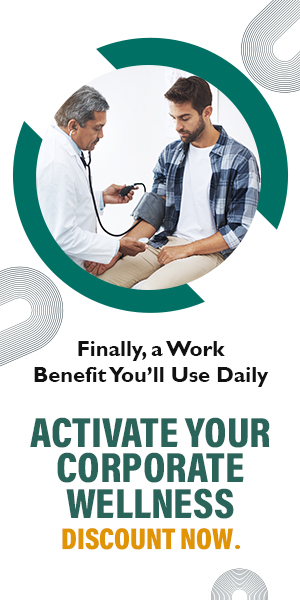Movement
Have You Heard of Rucking?
Rucking, a military-based resistance exercise, is gaining recognition for its health benefits and community-building potential.

In a time when the fitness industry is becoming saturated with high-tech gadgets and elaborate workout routines, rucking offers a refreshing return to the basics. It's all about putting on a backpack, adding some weight, and walking. Its origins in Special Forces training underline its effectiveness in building endurance and strength, which is also why it is a cornerstone of training elite military units. Whether you're new to the concept or a seasoned rucker, there's something for everyone in the world of rucking, and it's time to take a step forward and explore the path it offers.
Unlock insider access to the best movement plans for free! Sign up today.
What’s Rucking?
Rucking is a physical activity that involves walking or hiking while carrying a weighted backpack or rucksack. The term "ruck" or "rucksack" refers to the backpack used in this activity, which is typically a sturdy and well-designed backpack that can carry the necessary weight. The military-inspired practice of rucking has a rich history dating back several centuries. Remarkably, it continues to be a fundamental component of military training regimens even in contemporary times.
A 2018 research reported in the Journal of Fragility and Aging indicates that incorporating a weight vest into one's fitness routine can be a valuable strategy for weight loss and can have a noticeable impact on body composition. Soldiers often use rucking to improve endurance, strength, and stamina. Rucking is synonymous with marching or "tabbing" in military jargon, and it's an essential part of infantry training.
Related Post: The World's Greatest Stretch: Why Everyone Should Do It, Every Day
How to Get Started with Rucking
Rucking, a seemingly straightforward and unassuming activity, has experienced a surge in popularity in recent years. What began as a military training exercise has evolved into a fitness phenomenon embraced by a diverse range of individuals seeking physical, mental, and social benefits.
Aiming for a pace of 15 minutes per kilometre is a reasonable goal to work towards. If you find yourself moving at a slower pace of 20 minutes per kilometre or more, it's advisable to lighten the weight you're carrying. To get accustomed to rucking, begin with 1-2 rucks per week. For beginners, experiencing some muscle soreness is common and, in fact, a positive sign of your body adapting to the new activity.
Select the Right Gear
A suitable backpack (Rucksack) is the cornerstone of rucking. Choose a sturdy backpack or rucksack that can securely hold the weight. Ensure it has comfortable straps and proper weight distribution. It should be durable, comfortable, and capable of carrying weights securely. Military-style rucksacks or purpose-designed rucking backpacks are often preferred due to their robust construction.
Choose Weights According to Your Endurance
For beginners, start with a weight that's about 10-20 per cent of your body weight. You can use weight plates, sandbags, or other items like water bottles or bricks. While military personnel may use equipment such as sandbags, normal individuals often opt for weight plates, bricks, or even everyday items like water bottles or bags of rice to add the necessary weight. The choice of weight can be customised to match your fitness level and goals.
Proper Footwear
Comfortable and supportive footwear is crucial for an enjoyable and safe rucking experience. Choose hiking boots or sturdy athletic shoes with good arch support and cushioning. The shoes should provide stability over various terrains and prevent blisters or discomfort during extended walks.
Choose a suitable location
Rucking is not limited to a specific environment or location. It can be done in urban settings, suburban neighbourhoods, or natural landscapes. Its versatility and accessibility make it a go-to option for individuals seeking a workout that can be tailored to their surroundings. Begin with flat, easy terrain and gradually progress to more challenging routes.
Related Post: Celebrity Fitness Trainer On Five At-Home Workouts
Benefits of Rucking
Rucking is a multifaceted activity that enhances overall fitness by strengthening the heart, lungs, bones, and muscles. It's a low-impact exercise that caters to people of all fitness levels, making it an attractive option for those looking to maintain a balanced and sustainable fitness routine. It not only has physical benefits but also positively impacts mood and sleep patterns. Rucking offers a unique opportunity for people to connect with others, discover new places, and enjoy the great outdoors.
Rucking Improves Heart Health
Rucking is an excellent cardiovascular exercise that raises your heart rate and enhances your endurance. In a recent 2023 study published in the Journal of the American Medical Association (JAMA), it was revealed that individuals who managed to achieve a daily goal of 8,000 steps through walking experienced a notable decrease in the risk of cardiovascular disease and all-cause mortality. Increase the intensity of walks by adding more weights. Rucking provides a full-body workout, engaging various muscle groups while simultaneously improving cardiovascular fitness.
Helps In Muscle Engagement
Carrying the extra weight engages various muscle groups, including your legs, core, and upper body. According to a 2023 report issued in Health, using a weighted vest as a training aid provides a means to elevate the training load without altering an individual's speed. This, in turn, reduces the risk of leg and foot injuries.
Burn More Calories
According to a 2023 study issued by Ace Fitness, rucking burns a significant number of calories, making it an effective tool for weight management and fat loss.The presence of added weight during rucking significantly augments the overall mass you must move.
Rucking is Good For Joints
As a low-impact form of strength training, rucking contributes to the development of strong and dense bones, helping to mitigate age-related bone loss. Moreover, the beauty of rucking for bone health is that it doesn't necessitate daily sessions. Even occasional rucking can have a positive impact on your bone density, making it a convenient and accessible way to maintain or enhance bone health as you age.
Provide Relief From Stress
Beyond the physical advantages, rucking has gained recognition for its positive impact on mental health. The meditative rhythm of walking combined with the sense of accomplishment from completing challenging rucks can help alleviate stress, anxiety, and depression. The rhythmic nature of rucking can be meditative, reducing stress and promoting mental well-being.
Enhances Mood and Sleep Quality
Engaging in rucking outdoors, where sweat, sunshine, and a sense of community are prevalent, has a profound impact on our mental and emotional well-being. These elements stimulate the release of positive chemicals in our brains, and improves moods, enhanced sleep quality, and a revitalised spirit.
Related Post: Pole Fitness 101
Rucking Tips and Safety
Rucking is a rewarding and accessible activity, but like any exercise, it's important to practise it safely and effectively. In this section, we'll cover essential tips for proper rucking techniques, injury prevention, and safety precautions, along with a guide on how to get started with rucking.
Maintain Proper Posture
Keep an upright posture with your shoulders back, chest out, and core engaged. This helps distribute the weight evenly and reduces strain on your back.
Start Slow and Gradual
If you're new to rucking, begin with a manageable weight and duration. Gradually increase the weight and distance as your fitness level improves. Take natural, medium-length steps and avoid overstriding. Maintain a consistent pace to minimise the risk of injury.
Warm-Up and Stretch
Always warm up with light stretches and mobility exercises to prepare your muscles and joints for the ruck.
Choose the Right Footwear
Wear comfortable, supportive footwear with good traction. Proper shoes reduce the risk of blisters and injuries.
Distribute Weight Evenly
Ensure the weight in your backpack is distributed evenly. Place heavier items closer to your back and lighter items towards the outside.
Watch for Overloading
Avoid carrying excessive weight, as it can lead to overuse injuries. A good rule of thumb is not to carry more than 20 per cent of your body weight.
Be Mindful of Terrain
Be cautious on uneven or challenging terrains. Watch for tripping hazards, and use trekking poles for added stability when needed.
Carry Essentials
Bring essential items like a fully charged phone, identification, and a first aid kit in case of emergencies.Stay hydrated, and bring water and snacks to refuel during longer rucks. Proper nutrition is essential for sustained energy.
Remember that safety is paramount in any physical activity. By following these tips and precautions, you can enjoy the benefits of rucking while minimising the risk of injury and discomfort. Whether you're a seasoned rucker or just starting out, always prioritise your well-being during your rucking journeys.
Unlock insider access to the best movement plans for free! Sign up today.
Looking for an exclusive and unique experience, expert staff, and unparalleled member services? Come join us at URLife Studios! We offer a comprehensive range of wellness services that promote optimum well-being. We are a trusted source for unique holistic health and pregnancy care workshops. Our physiotherapists design customised rehab programs based on health conditions.
At UR.Life Studios, we offer a complete multi-disciplined approach to fitness and well-being. The URLife Studio is a luxe wellness oasis, combining sleek modern design, lavish amenities, state-of-the-art equipment and personalised wellness programs.
- Yoga
- Kickboxing
- Pool and Bollywood aerobics
- Pregnancy care workshops
- Customised physiotherapy
- Spa
- Garden Cafe
- Women’s wellness program
EXPLORE MORE
Instead of chasing long workouts, micro-movement shifts the focus from “Did I work out today?” to “Did I move often enough today?”
Pressed for time but craving results? These high-impact exercises burn maximum calories in minimum time, when done right.
Simple, practical fitness advice to help you feel stronger, healthier, and more consistent in 2026.
Callisthenics isn’t about flashy Instagram moves or avoiding the gym. According to celebrity fitness and lifestyle coach Krishna Sadvale, it’s one of the most practical ways to build strength, control, and confidence in your own body.






.jpg)

.jpg)
.jpg)
